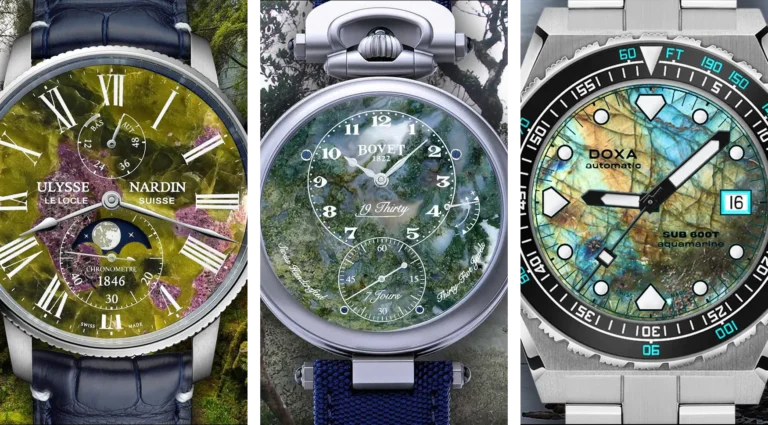Buffy Acacia
Stone dials are becoming more and more popular, and as a mineralogy nerd, this couldn’t make me happier. It’s actually a lot cheaper to produce than the brand would have you believe.,or There are still many Gibeon meteorites remainingIt doesn’t matter that the starry blue aventurine we all love is made from synthetic glass and glitter. Great looking and interesting originsthat’s all. But apart from a few unusual brands such as Biver, who use pietersite and sodalite, I can’t help but be disappointed by the lack of geological diversity on display. To those who saw the thumbnails and threw their cash at the screen, sorry, these watches aren’t the real deal. Here you’ll find some of the best stones that are in abundance enough to actually be used, that we’ve yet to see valued in watchmaking.
Labradorite

With its stunningly vibrant blue, green, purple and orange glow, labradorite is an instant favorite for any beginning gem hunter. Labradorite is primarily found in Labrador, Canada, hence its name, but it can potentially be found anywhere under the right conditions. Chemically speaking, labradorite is a humble and abundant material, a type of feldspar that makes up about 60% of the Earth’s crust, but its mystical iridescence makes it seem like something a wizard would use to build his or her home. There are a few small brands making labradorite watch faces, such as Signum, and to be honest, it should be one of your default options by now.
Rose Quartz

Quartz is not only the most common mineral in the world, it’s also one of the most diverse. It’s found everywhere, from chalcedony to agate to jasper. Rose quartz, a variety tinted pink by impurities of titanium, iron and manganese, is one of the most common semi-precious stones. Given the prevalence of both stone and pink dials, it’s quite unusual to see no rose quartz dials at all. Rose quartz forms primarily in glassy masses, a pastel pink with marbled white streaks, and its translucency can also be used to create a semi-skeleton effect.
Snowflake Obsidian

Many know obsidian as a natural form of volcanic glass created by the rapid cooling of silicon-rich lava, but it doesn’t always come in pure black chunks. Snowflake obsidian is formed when lava cools slowly and the silica components partially crystallize into another form of quartz called cristobalite. When cut and polished, these crystalline inclusions leave distinctive white-grey speckles that sometimes look like snowflakes or leopard print. Great vintage models from Gerald Genta and Cartier have used snowflake obsidian dials to great effect and should be brought back.
Stichtite in serpentine

From a geological and chemical standpoint, serpentine is a very complex group of minerals. Gemologists note serpentine’s apple-green morphology, from which it takes its name, especially its reptilian, scaly appearance. Stichtite is a vibrant purple mineral that arises from the chromium and magnesium content of serpentine, leaving a strong contrast of complementary purple and green in the rock. Not only is the color stunning, but the speckled texture is also mesmerizing. Although extremely rare examples are found around the world, it is only found in Tasmania, Australia, where it is sometimes called Atlantite.
Crushed Jasper

Another popular stone found in Western Australia, brecciated jasper is found across most of the continent. Its beauty is mainly due to impurities that give it a poetic tone as well as its rusty red color and thick, varied veining. Jasper is a completely opaque microcrystalline quartz. Rolex used multiple colors The original Stella dial was at the height of its popularity, but the breccia dial is far more dynamic and appealing for a modern watch and deserves its time to shine.
Moss Agate

Moss agate has seen a surge in popularity in recent years, mainly due to its use as cut gemstone in jewelry. Although the use of the term moss agate is debated, it is another form of microcrystalline quartz characterized by inclusions. The mix of milky quartz and dendritic crystal structures inside the stone creates magical landscapes, like an entrance to a bed of misty moss creeping into a river. Among the more common gemstones that evoke natural scenes, moss agate requires little help from the imagination. Some of the moss agate was used in Kross Studio’s KS 05 Central Floating Tourbillon, proving its worth as a star in watchmaking.
